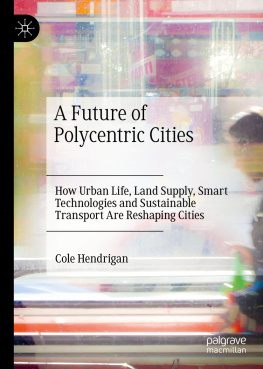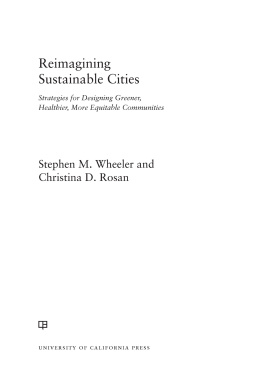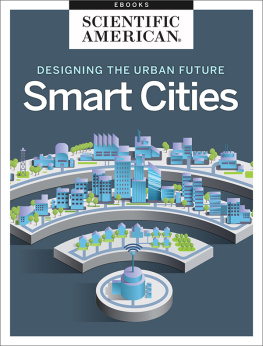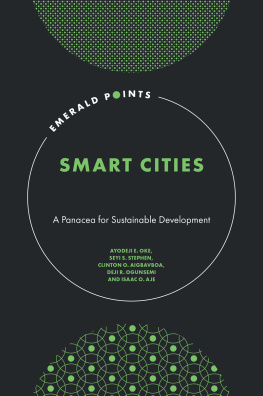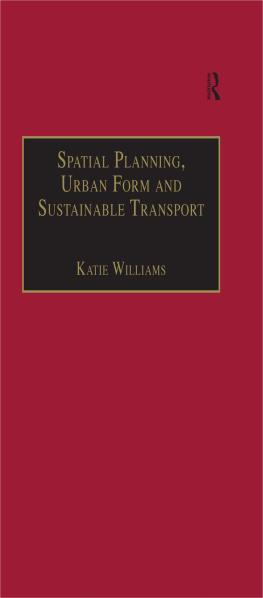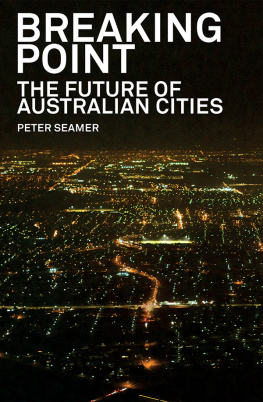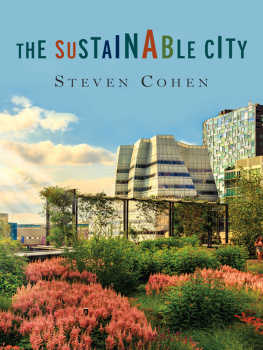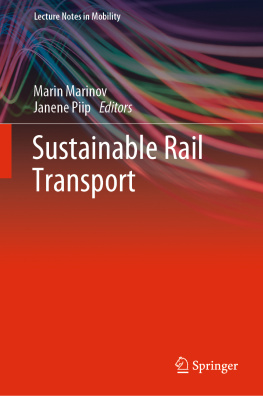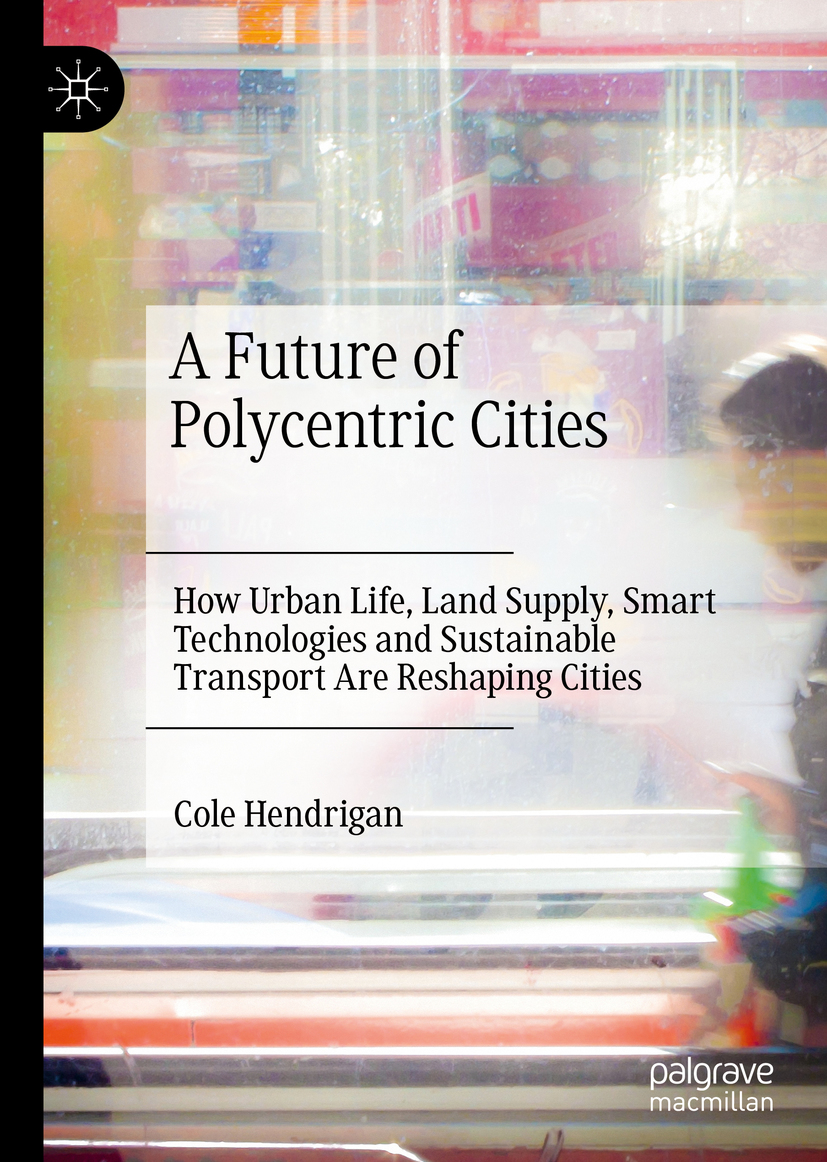Cole Hendrigan
A Future of Polycentric Cities
How Urban Life, Land Supply, Smart Technologies and Sustainable Transport Are Reshaping Cities
Cole Hendrigan
SMART Infrastructure Facility, University of Wollongong, Wollongong, NSW, Australia
ISBN 978-981-13-9168-2 e-ISBN 978-981-13-9169-9
https://doi.org/10.1007/978-981-13-9169-9
The Editor(s) (if applicable) and The Author(s), under exclusive license to Springer Nature Singapore Pte Ltd. 2020
This work is subject to copyright. All rights are solely and exclusively licensed by the Publisher, whether the whole or part of the material is concerned, specifically the rights of translation, reprinting, reuse of illustrations, recitation, broadcasting, reproduction on microfilms or in any other physical way, and transmission or information storage and retrieval, electronic adaptation, computer software, or by similar or dissimilar methodology now known or hereafter developed.
The use of general descriptive names, registered names, trademarks, service marks, etc. in this publication does not imply, even in the absence of a specific statement, that such names are exempt from the relevant protective laws and regulations and therefore free for general use.
The publisher, the authors and the editors are safe to assume that the advice and information in this book are believed to be true and accurate at the date of publication. Neither the publisher nor the authors or the editors give a warranty, express or implied, with respect to the material contained herein or for any errors or omissions that may have been made. The publisher remains neutral with regard to jurisdictional claims in published maps and institutional affiliations.
Cover illustration: Alex Linch/shutterstock.com
This Palgrave Macmillan imprint is published by the registered company Springer Nature Singapore Pte Ltd.
The registered company address is: 152 Beach Road, #21-01/04 Gateway East, Singapore 189721, Singapore
Overview
Delightful, clean, equitable, economically diverse and safe cities are the objective. Yet, despite the promise of walkable, transit-rich compact cities, there are gaps in knowledge and models. For example, the interactions of local land-use plans with public transportation provision to transform automobile-dependent metropolitan regions are largely unknown or opaque to decision makers. The book aims to uncover the capacity for redevelopment, both possible and necessary, to achieve a long-ranged transformation from an Automobile-Dependent City to a Transit-Oriented Region. It will prepare a replicable method based on available data to more clearly see the pay-offs and trade-offs of policy levers of sustainable transport and land-use planning. The results show that depending on the building heights, mixes of land use, transportation mode capacity and other factors, it is possible to build the next generations requirements of parks, housing, commercial and retail spaces along high-capacity rail public transit corridors. The results demonstrate that this may be accomplished while managing road congestion, housing the expected growth in population, improving social equity and ecological function and positively underwriting the fiscal position of governments. The results reveal a method to understand metropolitan growth as a science, to better inform the art of human-scaled urban design.
Acknowledgements
I would like to thank my academic supervisors, Peter Newman and Jeff Kenworthy for their immense patience. I am very honoured to have worked with both at Curtin University.
I am grateful for the generous support of the Curtin University International Post-Graduate Research Scholarship (CIPRS) funded through the Australian Research Council (ARC) Discovery grants and the Cooperative Research Centre for Spatial Information (CRCSI) for their substantial Top-Up Scholarship.
I am pleased to work with Pascal Perez and the University of Wollongong. The team has pushed me to new frontiers.
Last, my strong-willed wife and our perfect daughter deserve credit as the reasons for this book. I want to actively promote better cities so they can live better.
Abbreviations
BRT
Bus Rapid Transit
CO 2
Carbon Dioxide
GHG
Greenhouse Gas
GLUTI
Green Land Use and Transport Integration
LRT
Light Rail Transit
LUTI
Land Use and Transport Integration
OECD
Organisation for Economic Cooperation and Development
POS
Public Open Space
SOV
Single Occupant Vehicle
TOD
Transit-Oriented Development
TOR
Transit-Oriented Region
VKT
Vehicle Kilometres Travelled
List of Figures
Fig. A.1 Developer/Amenity curve calculator (Source: Author, 2014)
Fig. B.1 Typical street hierarchy based on automobile travel speeds (Source: Author, 2014. This diagram shows little to no regard to the pedestrian, cyclist or transit user)
Fig. B.2 Best practice for multi-modal transport (Source: Author, 2014. This diagram shows high regard to the pedestrian, cyclist or transit user as there are speed tables on streets designed for between 20 and 35 km/h; with protected bicycle infrastructure for streets over 35 km/h, landscape buffered and separated bicycle and pedestrian realms for street designs over 60 km/h. Public transport receives a separated RoW for street designs over 25 km/h)
Fig. C.1 Best practice for active transportation (Source: Author, 2014. Description of this diagram repeats from Fig. 95)
Fig. F.1 US capital cost per km by mode
Fig. F.2 US capital cost per passenger km by mode
Fig. F.3 US operating cost to total passenger km by mode (year)
Fig. G.1 Transit Capacities and Urban Form (Source: Author, 2019)
Fig. H.1 Styles of densities compared (Source: Author, 2019)
Fig. I.1 Private transport mode share, Metropolitan
Fig. I.2 Urban density
Fig. I.3 Road metres per person
Fig. I.4 Density to road metre
Fig. I.5 Road to density ratio
Fig. I.6 Density and transit provision
Fig. I.7 Transit service ratios
List of Tables
The Author(s) 2020
C. Hendrigan A Future of Polycentric Cities https://doi.org/10.1007/978-981-13-9169-9_1
1. Freedom in Cities
Cole Hendrigan
(1)
SMART Infrastructure Facility, University of Wollongong, Wollongong, NSW, Australia
Cole Hendrigan
Cites develop and change. This book is relevant to almost all developing cities, except a few in decline or which are leading. This book will be wide-ranging, as the topic is broad. Often the links between facets of city life and growth are only alluded to. This book examines closely, numerically, the many links.
Fundamental to the role of changing cities is space. Cities are places with a lack of space, or at least, less space than the countryside. This book is about creating more space in cites for more economic and social life to occur with lower travel time costs and many enumerated co-benefits.
This book will challenge the current engineering design of cities to refocus, deliberately, around high-capacity transportation nodes. Such development patterns will create a connected, semi self-organising [] polycentric city, and generate benefits accrued to the city government and to the residents as the leading actors/citizens. It will also be about the future of technology and the potential for gathering urban data to provide more quantity of knowledge on quality city life. Lastly, this book is about residents having more choice and encouraging an emergence of elegant options within the complexity of interesting urban life.

